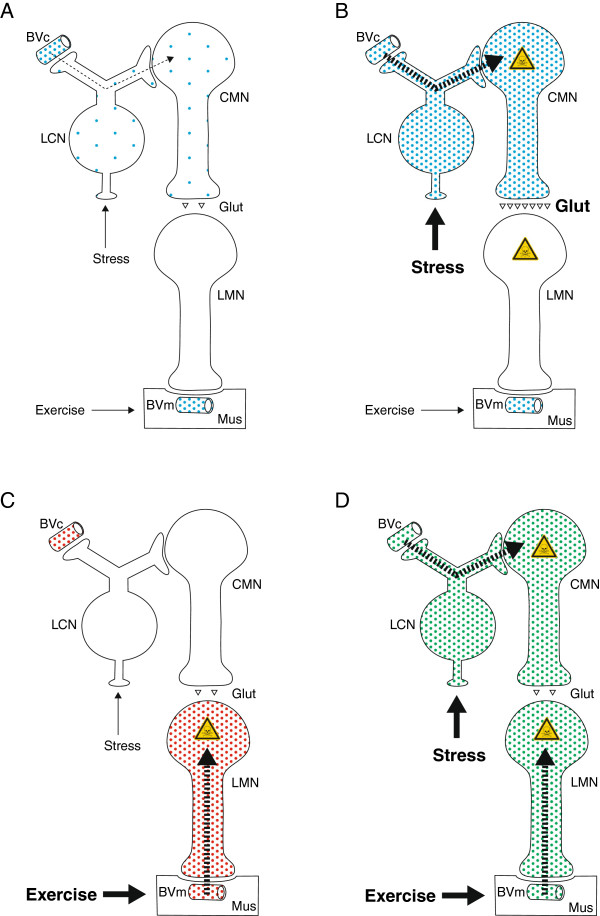Figure 4.
Potential pathways for toxins to enter motor neurons and the possible resulting ALS phenotypes. (A) This circulating toxin is taken up from cerebral (but not peripheral) blood vessels and enters LC neurons. The LC neurons then pass the toxin on to CMNs (thin dashed arrow). With low levels of stress, CMNs take up only a small amount of the toxin, which can readily be handled by cellular detoxifying mechanisms. (B) Under high levels of stress, increased noradrenaline recycling in LC neurons leads to a greater uptake of the toxin into CMNs, which overwhelms the cellular detoxifying mechanisms and could cause an upper motor neuron predominant form of ALS. A toxin that causes CMNs to produce more glutamate will damage LMNs, possibly leading to classical ALS. (C) During strenuous exercise an increased uptake of circulating toxin from intramuscular blood vessels at neuromuscular junctions damages LMNs. This could result in a lower motor neuron predominant form of ALS. (D) This toxin, aided by both stress and exercise, is taken up from both cerebral and intramuscular blood vessels and so can enter CMNs and LMNs. This could result in classical ALS. BVc: cerebral blood vessel, BVm: intramuscular blood vessel, CMN: corticomotor neuron, Glut: glutamate, HgAMG: autometallographic-demonstrable mercury, LC: locus ceruleus, LFB: Luxol-fast blue, Mus: muscle.

